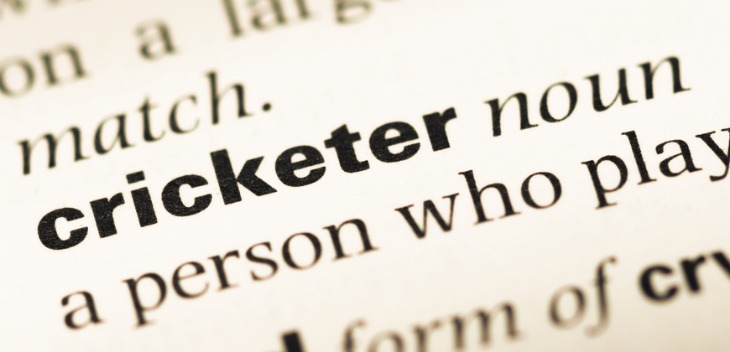- Pioneering Authors in Cricket Writing
- Classic Cricket Biographies
- The Role of Statistics in Cricket Books
- Contemporary Cricket Literature
- Notable Autobiographies of Cricket Legends
- Analyzing Cricket Technique in Literature
- The Influence of Cricket Fiction
- Women in Cricket Literature
- Regional Perspectives in Cricket Writing
- Digital Age: E-books and Cricket Blogs
- Conclusion
As cricket's popularity grew, so did the demand for more in-depth analysis and storytelling. This demand led to the publication of biographies of cricketing legends, offering readers a glimpse into the lives of their sporting heroes.
Pioneering Authors in Cricket Writing
The early cricket writers played a pivotal role in shaping the genre. Prominent among them was Charles Cowden Clarke, whose book "The Game of Cricket" (1851) laid the foundation for cricket's literary exploration. Clarke's work was marked by its detailed descriptions of cricketing techniques and strategies, serving as an instructional manual for players of the era.
Another notable figure is Arthur Haygarth, whose "Scores and Biographies" series, first published in 1862, is a monumental collection of cricket statistics and player biographies. Haygarth's dedication to compiling accurate records of cricket matches and players was instrumental in preserving the history of the sport.
Classic Cricket Biographies
Classic cricket biographies hold a special place in the realm of cricket literature. These books offer readers a chance to delve deep into the lives and careers of cricketing icons. One of the most renowned works in this category is Sir Pelham Warner's "My Cricketing Life," published in 1921. Sir Warner's book not only chronicles his own illustrious career but also provides valuable insights into the cricketing world of his time.
The autobiography of Sir Donald Bradman, "Farewell to Cricket," published in 1950, is another cornerstone of classic cricket literature. Bradman's meticulous approach to the game is reflected in his writing, offering readers a firsthand account of his experiences and the challenges he faced on the cricket field.
These classic biographies serve as historical records, capturing the spirit of different eras in cricket. They provide a window into the personalities, struggles, and triumphs of cricketing legends, making them an essential part of any cricket enthusiast's library.
The Role of Statistics in Cricket Books
Cricket and statistics are inseparable companions, and this relationship is well-documented in cricket literature. Arthur Haygarth's "Scores and Biographies", mentioned earlier, is a prime example of the significance of statistics in the cricketing world. Haygarth's meticulous record-keeping set a precedent for future statisticians and cricket writers.
In addition to comprehensive statistics, cricket books often use data to analyze player performance, team strategies, and the evolution of the game itself. These analytical works help enthusiasts gain a deeper understanding of cricket's nuances. For instance, books like "The Art of Captaincy" by Mike Brearley explore the strategic decisions and leadership qualities required for success on the cricket field.
Moreover, modern cricket books are replete with statistical analyses, providing readers with insights into player averages, match outcomes, and trends in the sport. The role of statistics in cricket literature continues to evolve, reflecting the growing demand for data-driven insights in the contemporary cricketing landscape.
For more realted information read our article: The Role of Data Analytics in Modern Cricket Strategy.
Contemporary Cricket Literature
The landscape of cricket literature has evolved alongside the sport's modernization. Contemporary cricket literature encompasses a wide range of genres and formats, catering to diverse tastes within the cricketing community.
In recent years, cricket fans have been treated to a plethora of biographies and autobiographies of current and retired players. Works like "A Century Is Not Enough" by Sourav Ganguly and "Playing It My Way" by Sachin Tendulkar offer readers an inside look into the lives and careers of cricketing legends from a more contemporary perspective. These books not only provide insights into the players' journeys but also shed light on the changing dynamics of the sport.
Furthermore, contemporary cricket literature extends beyond individual narratives. Authors and journalists often explore topical issues such as match-fixing scandals, the impact of T20 cricket, and the ever-evolving rules and regulations of the game. These works contribute to a nuanced understanding of cricket's place in the modern world.
The digital age has also ushered in a new era of cricket writing, with e-books and cricket blogs gaining popularity. Online platforms allow fans and experts to share their thoughts, analyses, and match commentaries in real-time, fostering a dynamic cricketing discourse.
For more related information read our articles: Key Differences Between Test, ODI, and T20 Formats and Key Metrics to Consider in T20 Cricket Betting.
Notable Autobiographies of Cricket Legends
The autobiographies of cricket legends hold a special allure for fans worldwide. These accounts offer a unique perspective on the careers, triumphs, and challenges faced by the game's greatest players.
One such autobiography is "Out of My Comfort Zone" by Steve Waugh, which provides an intimate look into the mindset and leadership of the former Australian captain. Waugh's candid narrative reveals the mental and emotional aspects of top-level cricket.
Similarly, "Sunny Days" by Sunil Gavaskar delves into the life of the Indian batting maestro. Gavaskar's journey from a young cricketer in Mumbai to becoming one of the sport's most respected figures is a captivating story of determination and success.
These autobiographies often transcend the boundaries of cricket, offering life lessons and insights that resonate with readers beyond the cricketing world. They serve as testaments to the enduring impact of cricket legends and their enduring influence on the sport.
Analyzing Cricket Technique in Literature
The intricacies of cricket technique have long been a subject of fascination for players, coaches, and enthusiasts alike. Cricket literature has played a pivotal role in dissecting and explaining the nuances of batting, bowling, and fielding.
Authors such as Don Bradman, often regarded as one of the greatest batsmen in the history of the sport, have contributed significantly to this aspect of cricket writing. Bradman's book "The Art of Cricket", published in 1958, delves deep into the technical aspects of batting. His precise explanations and insights into shot selection, footwork, and concentration continue to be valuable resources for aspiring cricketers.
Similarly, renowned cricket coach and writer, Bob Woolmer, authored "Art and Science of Cricket", a comprehensive guide that dissects the technical aspects of the game. This book covers batting, bowling, and fielding techniques, providing readers with a holistic understanding of the fundamentals.
Cricket literature's focus on technique not only aids players in honing their skills but also fosters a deeper appreciation for the craftsmanship that goes into the game. It serves as a repository of knowledge for those seeking to understand and master the art of cricket.
The Influence of Cricket Fiction
While cricket literature often leans towards non-fiction, cricket has also been a prominent theme in the world of fiction. Cricket fiction explores the sport's cultural significance, its impact on communities, and the role it plays in the lives of its protagonists.
Notable works in this genre include "The Book Thief" by Markus Zusak, in which cricket serves as a backdrop to the story, highlighting its universal appeal. Additionally, Hanif Kureishi's novella "The Body" uses cricket as a metaphor to explore themes of identity and belonging in the context of post-colonial Britain.
Cricket fiction, while less common than its non-fiction counterpart, offers a unique perspective on the sport. It allows authors to use cricket as a lens through which to examine broader societal issues and human experiences.
Women in Cricket Literature

The role of women in cricket has evolved significantly over the years, and this evolution is reflected in cricket literature. While the sport was historically dominated by men, women's cricket has gained prominence, leading to a growing body of literature dedicated to their contributions.
Notable works in this category include autobiographies of female cricketing legends like Belinda Clark and Charlotte Edwards. These books shed light on the challenges faced by women in a male-dominated sport and their remarkable achievements. Clark's autobiography, "Belinda: My Life", provides insights into her journey as one of Australia's most successful women cricketers, while Edwards' "Carpe Diem" offers a glimpse into her captaincy and leadership of the England women's team.
Moreover, academic studies and journalistic accounts have explored the socio-cultural aspects of women's cricket. These works examine the changing perceptions of women in the sport and the strides made towards gender equality in cricket.
The inclusion of women's cricket literature not only celebrates the achievements of female cricketers but also contributes to a more comprehensive understanding of the sport's history and its impact on gender dynamics.
Regional Perspectives in Cricket Writing
Cricket's global reach has led to a diverse array of cricket literature that reflects regional perspectives and experiences. Different regions have their own cricketing traditions, legends, and narratives, all of which are captured in the writings of authors from those areas.
For instance, West Indian cricket literature offers a unique perspective on the sport, emphasizing the cultural significance of cricket in the Caribbean. Works like "Fire in Babylon" by Simon Lister explore the rise of West Indies cricket in the 1970s and its role in inspiring Caribbean identity and pride.
In South Asia, cricket is not just a sport but a way of life. Indian cricket literature, in particular, showcases the passion and obsession that millions of fans have for the game. Books like "Sachin Tendulkar: Playing It My Way" provide insights into the cricketing fervor that grips the nation.
Similarly, Australian cricket literature reflects the nation's competitive spirit and commitment to excellence. The writings of cricketing legends like Sir Donald Bradman and Ricky Ponting highlight Australia's cricketing prowess and its enduring legacy.
Regional perspectives in cricket writing enrich the overall cricketing narrative, offering readers a deeper understanding of the sport's cultural, social, and historical context in different parts of the world.
Digital Age: E-books and Cricket Blogs
The digital age has ushered in a new era of cricket literature, with the proliferation of e-books and cricket blogs. These digital platforms have revolutionized how cricket enthusiasts access and engage with cricketing content.
E-books have made cricket literature more accessible than ever before. Readers can now download their favorite cricket books onto e-readers or tablets, allowing for convenient reading on the go. Many classic and contemporary cricket titles are readily available in digital format, widening the reach of cricket literature to a global audience.
Cricket blogs have also gained prominence in the digital landscape. These online platforms provide cricket aficionados with a space to share their thoughts, analyses, and match commentaries in real-time. Cricket bloggers often offer unique perspectives and in-depth analyses of cricketing events, adding a dynamic dimension to cricket discourse.
Moreover, the digital age has enabled cricket fans to connect and engage with each other on social media platforms. Twitter, in particular, has become a hub for cricket discussions, with players, experts, and fans sharing insights, opinions, and breaking news related to the sport.
The digitalization of cricket literature has democratized the dissemination of cricket knowledge, allowing fans to actively participate in the global cricketing conversation.
Conclusion
Cricket literature, in all its forms, enriches our understanding of the sport, its history, and its cultural significance. It offers fans a chance to connect with their cricketing heroes, explore the technical intricacies of the game, and examine the social and cultural dimensions that cricket encompasses.


